Project funded by: The Danish Council for Independent Research | Technology and Production Sciences
Contact: Associate Professor Alexander Shapiro
Particles in Pores: Stochastic Modelling of Polydisperse Transport
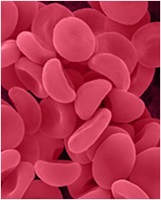
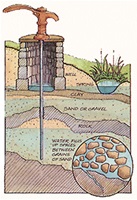 Modelling Particle transport in porous media is of great importance in a number of applications, e.g. industrial filtration, waste water treatment, mass transfer in human tissues, mud filtration around injection and production wells, contaminants spreading in ground water, and others. For many of the applications, the convention modelling methodology cannot catch many of the experimental observations, such as the dispersed effluent concentration profiles, hyperexponential deposition, or even non-monotonic deposition.
Modelling Particle transport in porous media is of great importance in a number of applications, e.g. industrial filtration, waste water treatment, mass transfer in human tissues, mud filtration around injection and production wells, contaminants spreading in ground water, and others. For many of the applications, the convention modelling methodology cannot catch many of the experimental observations, such as the dispersed effluent concentration profiles, hyperexponential deposition, or even non-monotonic deposition.
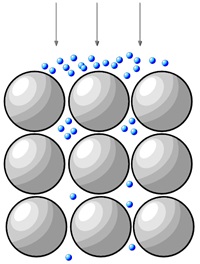 Particle residence time distribution, particle and pore size distributions are very important factors to be considered in a filtration process in nature. Especially for natural porous media and natural particles, the heterogeneity of media and particle population strongly influences the particle residence time, particle and pore size distributions. A more advanced and comprehensive model, which may take into account these factors, is desirable.
Particle residence time distribution, particle and pore size distributions are very important factors to be considered in a filtration process in nature. Especially for natural porous media and natural particles, the heterogeneity of media and particle population strongly influences the particle residence time, particle and pore size distributions. A more advanced and comprehensive model, which may take into account these factors, is desirable.
The two recently emerging stochastic models based on the stochastic continuous theory of random walks (CTRW) and on the Boltzmann approach take into account particle size distribution and particle flow dispersion, but do it separately.
The research project involves the collaboration between the Center for Energy Resources Engineering (CERE) in Technical University of Denmark and Australian School of Petroleum (ASP) in the University of Adelaide. Associated Prof. Alexander Shapiro, Prof. Erling Stenby, Postdoc Sidsel M. Nielsen and PhD student Hao Yuan are the main participants in CERE. Prof. Pavel Bedrikovetsky is the associated member in ASP.
Objective of the project
The goal of the present work is to create a unified stochastic approach to flows of suspensions in porous media, which would take into account both the size distribution and the residence time distribution of the particles in the pores of the different sizes. The approach will be approved on the available sets of the experimental data. The software created on its basis will be applied to practically important cases.
Progress and Updates
1) An integral model taking into account the residence time distribution and particle pore size distributions was developed.(10.2009)
2) A simulator for the integral model was developed in FORTRAN and MATLAB. (12.2009)
3) Modelling results were compared to a number of experiments. The comparisons verified that the proposed model excels the conventional methods in both fitting and predicting experiments.(04.2010)
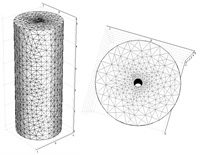 4) A new model considering the migration of surface phase was developed.(05.2010)
4) A new model considering the migration of surface phase was developed.(05.2010)
5) A paper on the integral model for non-Fickian transport and hyperexponential deposition was published in Chemical Engineering Journal (2010)
6) A paper considering the migration of surface phase for non-monotonic deposition was published.(2010)
7) The elliptic equation is applied to simulate the 2-D filtration around an injection well
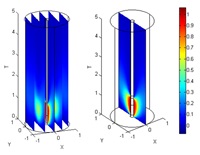
in oil reservoirs.(10. 2010)